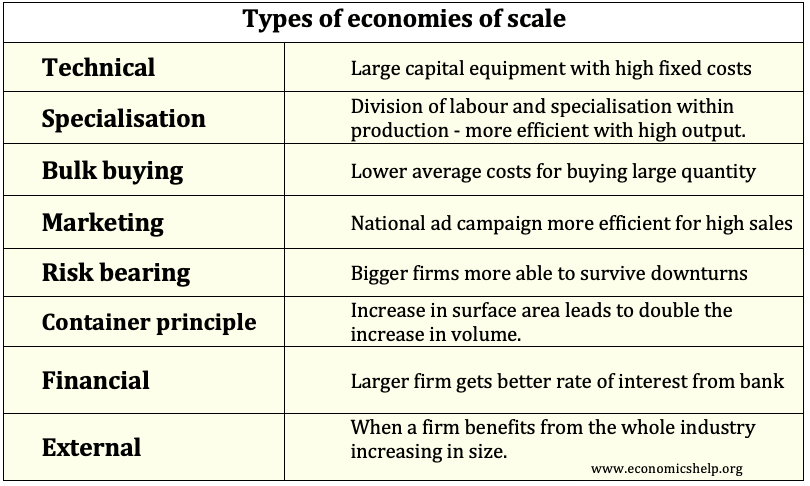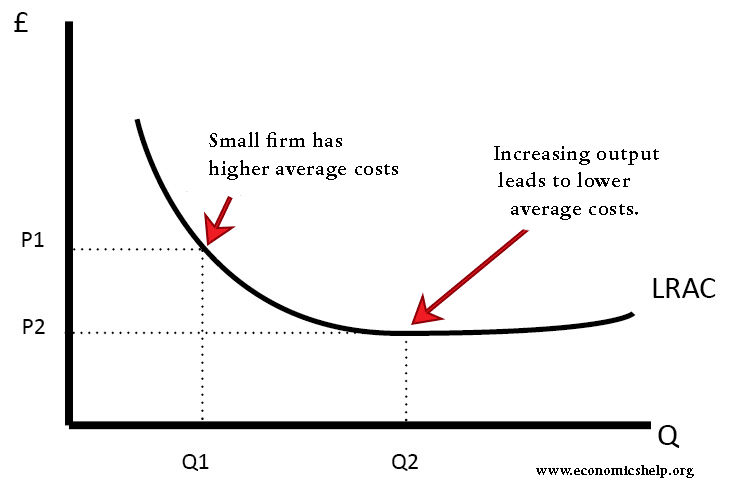Economies of scale occur when increasing output leads to lower long-run average costs. It means that as firms increase in size, they become more efficient.
Diagram of economies of scale
Increasing output from Q1 to Q2, we see a decrease in long-run average costs from P1 to P2.
Economies of scale are important because they mean that as firms increase in size, they can become more efficient. For certain industries, with significant economies of scale, e.g aeroplane manufacture, it is important to be a large firm; otherwise they will be inefficient.
Examples of economies of scale

1. Specialization and division of labour
In large scale operations workers can do more specific tasks. With little training they can become very proficient in their task, this enables greater efficiency. A good example is an assembly line with many different jobs.
2. Technical
Some production processes require high fixed costs e.g. building a large factory. If a car factory was then only used on a small scale, it would be very inefficient to run. By using the factory to full capacity, average costs will be lower.
3. Bulk buying If you buy a large quantity, then the average costs will be lower. This is because of lower transport costs and less packaging. This is why supermarkets get lower prices from suppliers than local corner shops.
4. Spreading overheads If a firm merged, it could rationalise its operational centres. E.g. it could have one head office rather than two.
5. Risk-bearing economies Some investments are very expensive and perhaps risky. Therefore only a large firm will be able and willing to undertake the necessary investment. E.g. pharmaceutical industry needs to take risks in developing new drugs
6. Marketing economies of scale There is little point a small firm advertising on a national TV campaign because the return will not cover the high sunk costs
7. The container principle To increase capacity eight-fold, it is necessary to increase surface area only fourfold.
8. Financial economies A bigger firm can get a better rate of interest than small firms
9. External economies of scale This occurs when firms benefit from the whole industry getting bigger. E.g. firms will benefit from better infrastructure, access to specialised labour and good supply networks. E.g. microchip producers often set up in Silicon Valley. See more on external economies of scale.
Internal economies of scale
Most of the above economies of scale are internal. It means the economies benefit the firm when it grows in size
Studies in economies of scale
Studies in economies of scale suggest that, in the automobile industry, to attain the lowest point on the long run average costs the minimum number of cars to be produced in 1 year is 400,000.
See also


1 thought on “Definition of economies of scale”
Comments are closed.